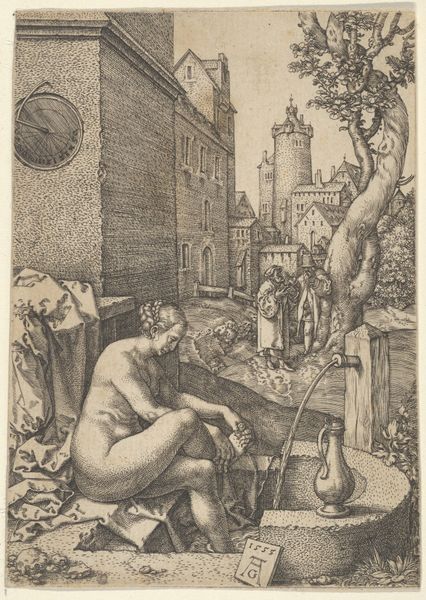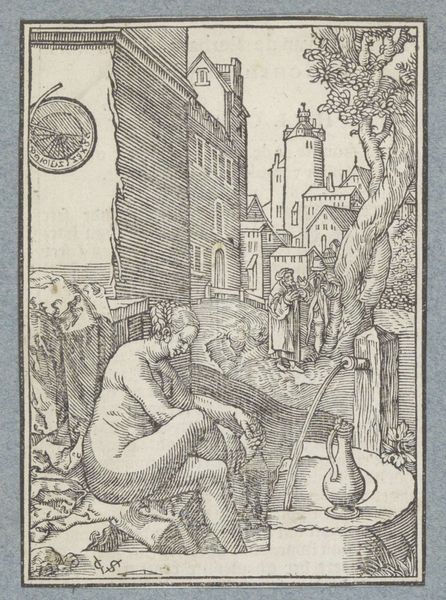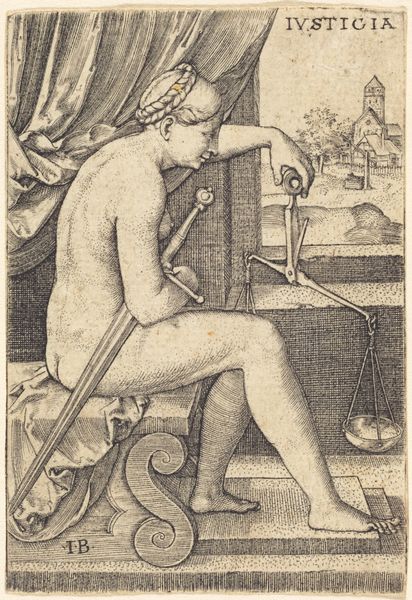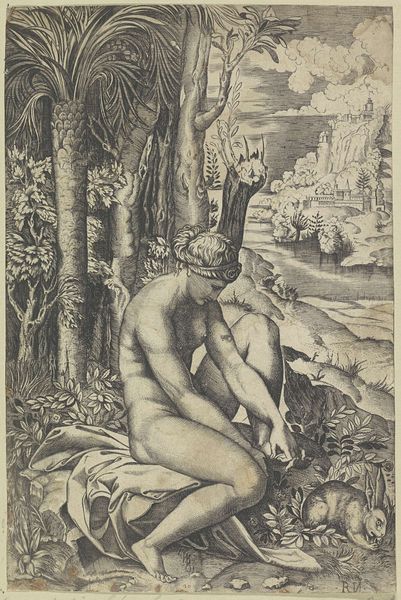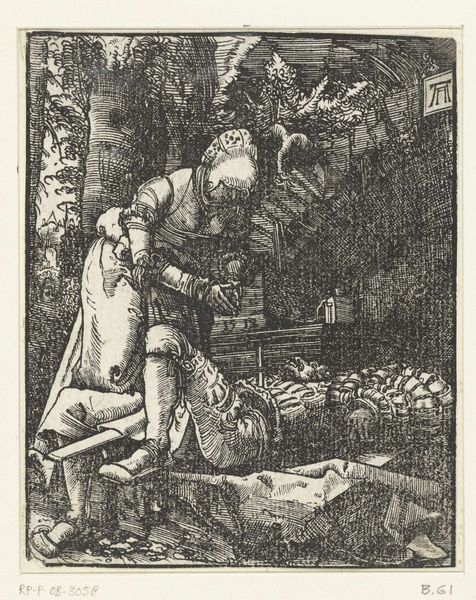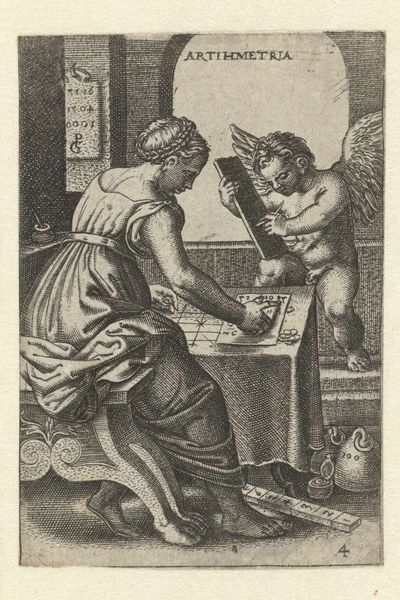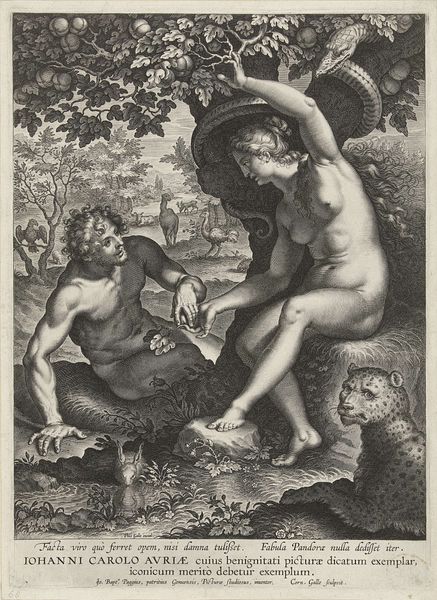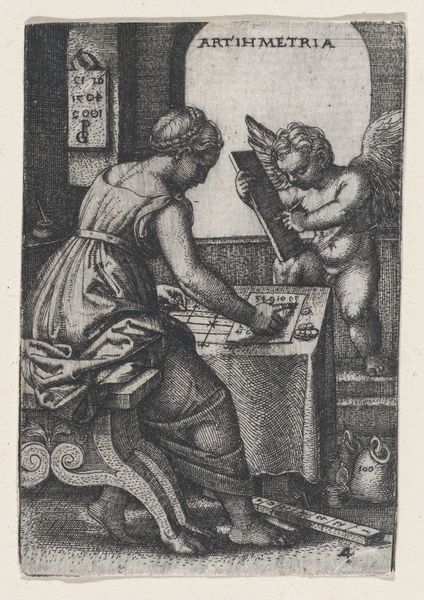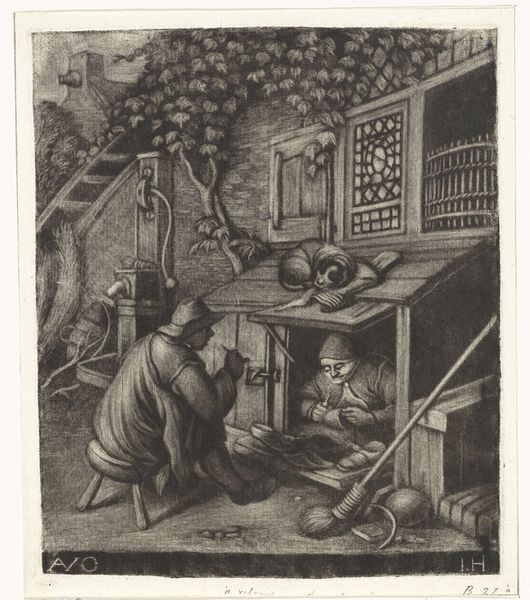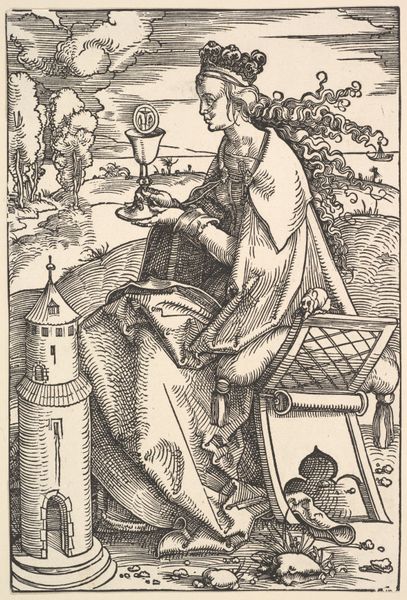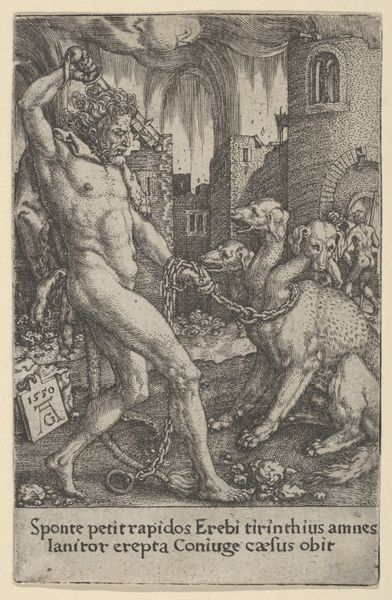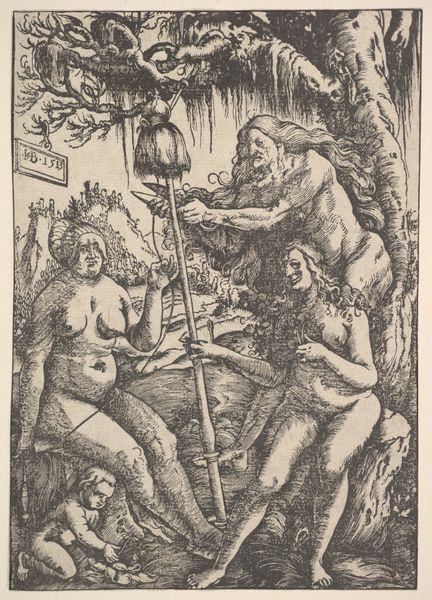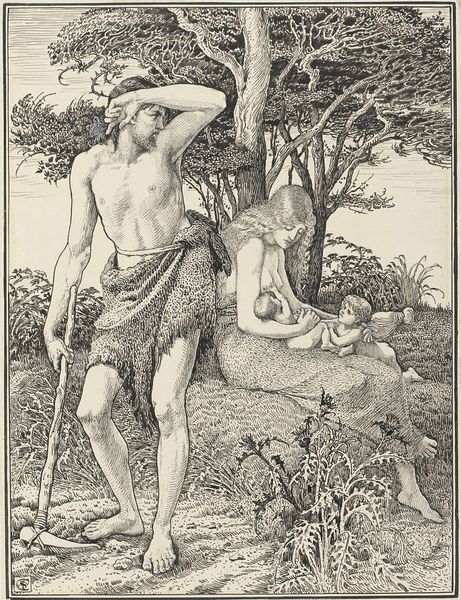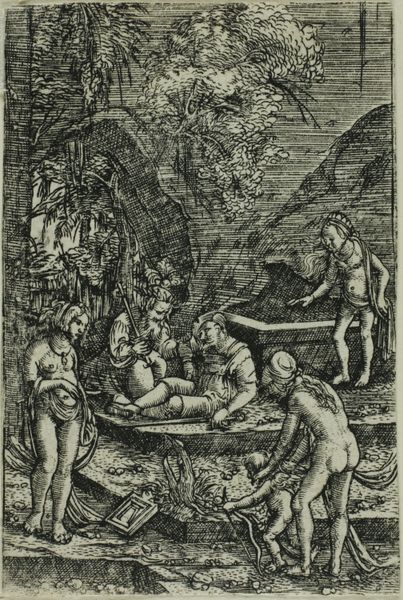
engraving
#
landscape
#
genre-painting
#
history-painting
#
northern-renaissance
#
nude
#
engraving
Dimensions: height 115 mm, width 77 mm
Copyright: Rijks Museum: Open Domain
Editor: Here we have an engraving titled *Susanna and the Elders*, dating somewhere between 1555 and 1610. It's by an anonymous artist and currently resides in the Rijksmuseum. The stark black and white and incredibly fine lines give the whole scene an unsettling, almost voyeuristic feel. What resonates with you most when you look at it? Curator: I see the convergence of sacred and secular. The Susanna story, a popular subject during the Northern Renaissance, allowed artists to explore themes of female virtue and male lust. But it also tapped into pre-existing cultural anxieties about power, morality and what is watched and unseen. Note the bathing Susanna in the foreground, so unaware, set against a background landscape crowded with witnesses, both the literal elders and the towering architecture. Editor: So the architectural details are part of the storytelling? Curator: Absolutely! Buildings themselves can become symbols. Towers, for example, can represent power, aspiration, but also confinement. Here, does it seem protective, or does it contribute to a feeling of being observed? And then think about the sundial on the wall… time is always watching us. Editor: It's like Susanna is caught in a trap not only of lust but of time and societal structures. Curator: Precisely. The water flowing from the fountain—a symbol of purity, ironically situated at the very center of the drama. Does its ceaseless flow mock or mirror the unfolding events? These artists embedded multiple layers of meaning, prompting us to decode their visual language. Editor: That's a different way to think about it; so it's not just a picture but a whole visual language. It definitely offers much to reflect on. Curator: Indeed. The continued resonance of the story itself also hints at its eternal struggle between public judgment and individual freedom.
Comments
No comments
Be the first to comment and join the conversation on the ultimate creative platform.
